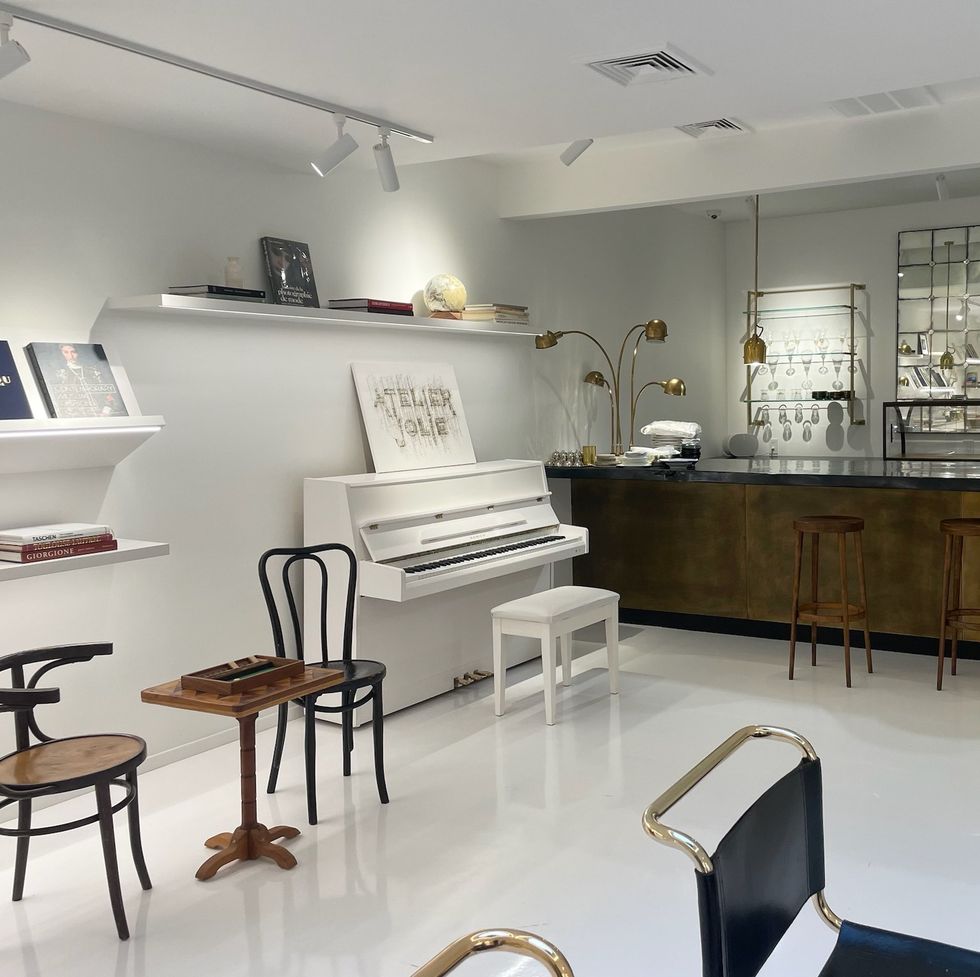The unassuming, two-story building at 57 Great Jones Street may seem out of place in a Lower Manhattan neighborhood known for gleaming new residential buildings packed with deep-pocketed A-listers, but it too housed a laundry list of notable (some infamous) New Yorkers. As the former home of artist Jean-Michel Basquiat, who rented the second floor from his friend Andy Warhol in the 1980s, the address is enshrined in downtown art-world lore. The building may have switched owners multiple times in the three decades since Basquiat’s death, but it endures as an indisputable landmark for graffiti artists who’ve sprayed the facade’s front panels with Basquiat’s SAMO moniker and the signature crown motif on his paintings.
That rich history may explain why Angelina Jolie felt an “immediate communion” with the building when she was scouting retail spaces for Atelier Jolie, her newly opened fashion boutique focused on selling clothes made from vintage and deadstock materials. The actress, director, and former UN Refugee Agency Goodwill Ambassador and Special Envoy may have raised eyebrows when she announced her latest venture’s storied address this past summer, but she took care to maintain the integrity of its architecture—and the artistic sensibilities of its former tenants—during the renovation, which was spearheaded by Bonetti/Kozerski Architecture. That care reverberates throughout the two-story atelier, mostly by giving buyers the option of customizing pieces in the Atelier Jolie collection, which ranges from fluid trench coats and sheer dresses to plain white T-shirts, all at accessible prices.
Jolie, who has largely stepped away from the spotlight to prioritize motherhood and charitable interests, envisioned her atelier as a collaborative space that celebrates the power of tailoring and recasts the customer as a maker. “I’ve met a lot of artisans over the years,” she tells Vogue, noting her goal is to create community. “I’d like to see them grow. I don’t want to be a big fashion designer. I want to build a house for other people to become that.” Trained in-house artisans work with buyers on alterations like embroidery and patchwork, but take-home mending kits and stud-it-yourself activity stations are free for anyone to use. Proceeds from sales of artist-made patches will go to charity, and the atelier’s first collection, a collaboration with Chloé and its former creative director Gabriela Hearst, was created with charitable organizations Akanjo and La Fabrique Nomade.
“Designers often sketch or approve designs, but it is the tailors who make the difference and who I truly love creating with,” Jolie wrote in a letter on Atelier Jolie’s website. “These makers rarely receive the credit and respect they deserve. I’m building a place for creative people to collaborate with a skilled and diverse family of expert tailors, pattern makers, and artisans from around the world. A place to have fun. To create your own designs with freedom.” Basquiat used to scrawl anti-capitalist messages around New York City, including SAMO (“same old shit”). Something tells us he’d be skeptical of a celebrity brand inheriting his address, but Jolie’s label is aiming for something more like Mary Kate and Ashley Olsen’s The Row, where fame doesn’t come before design and craft.


